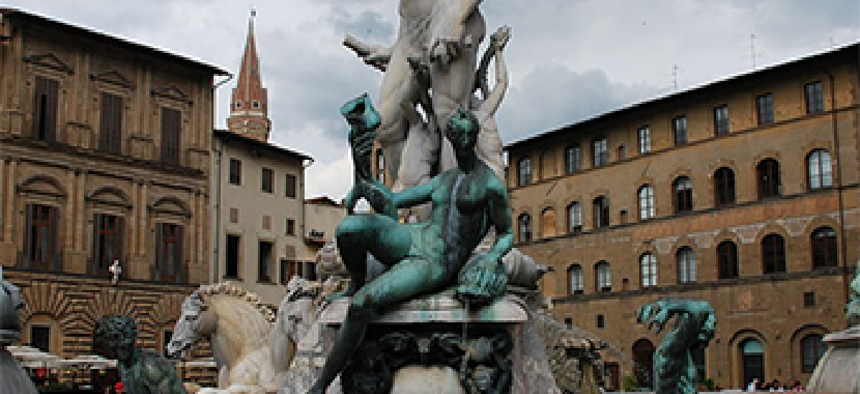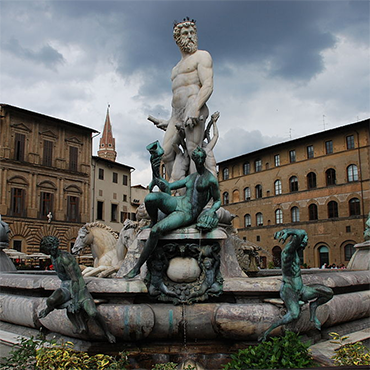More Florentine observations

Steve Kelman discovers a new level of tourism in Italy.

A statue in Florence, Italy. Photo via Wikimedia by By MarcusObal [CC-BY-SA-3.0 (License.)
The center of Florence is completely dominated by tourists in a way one seldom sees. Imagine if the only people walking on Pennsylvania Avenue in Washington, Fifth Avenue in New York, or even the heavily-touristed Champs-Elysees in Paris were tourists, with few residents. That's what the center of Florence is like: Wall-to-wall tourists, many of them in tour groups, led by guides speaking a bewildering collection of languages (I even heard Swedish), most with little flags with a group number on the top. As a single tourist, I got accosted outside the Cathedral by two people offering to be my personal tour guide.
The architectural style through much of the city is relatively similar – sepia stucco three-story houses with green shutters to keep out the sun (which weirdly do not, at least at the hotel and conference center, seem to open. At least, I couldn't figure out how to open them). It is old and charming, though not particularly fancy -- compared, say, with Paris. At the end of the 19th century, the Piazza della Republica, in the center of the city on the site of the old Roman Forum--a rundown area that was also the site of the city's Jewish ghetto for many centuries--was razed and replaced with vaguely imposing neoclassical buildings, whose style is not as grandiose as the inscription on the biggest of them: "From long-time squalor to a new life." As I looked at the inscription, I wondered if Italy's clock was being run backwards, from a new life back to squalor. The Renaissance-era square right near the Uffuzi art museum was the site of the "bonfire of the vanities," a burning of ostentatious possessions encouraged by the late 15th-century religious reformer Savonarola. The name of this practice – I hadn't known this – gave Tom Wolfe the title for his novel about Wall Street in the 80s.
The food and wine are, frankly, magnificent. I have never had such tasty institutional food as at the university conference location outside Siena where I have been – yummy penne pasta with a duck ragout, very thinly sliced, tender chicken breast with a brown sauce. And a lot of local Chianti red wine, which is one of my favorites.
Flying back home via Frankfurt, Germany, I saw an interesting sight at the airport. In many European airports, the area leading to the plane is bedecked with ads, typically for big international banks such as Citibank, HSBC, or Deutsche Bank. In Frankfurt, I saw a whole bunch of ads for a new player – ICBC. That's the Industrial and Commercial Bank of China, one of China's largest (state-owned) banks. Part of our new world.


